Key takeaways
- A positive classroom environment values every student, fostering confidence and a sense of safety.
- Activist teaching emphasizes equity, relationship building, and reflection to empower students and promote meaningful learning.
- Inclusion and respect are fostered through clear expectations, sharing personal stories, and celebrating diversity.
- Engaging lessons that connect to students’ experiences and current events enhance motivation and participation in learning.
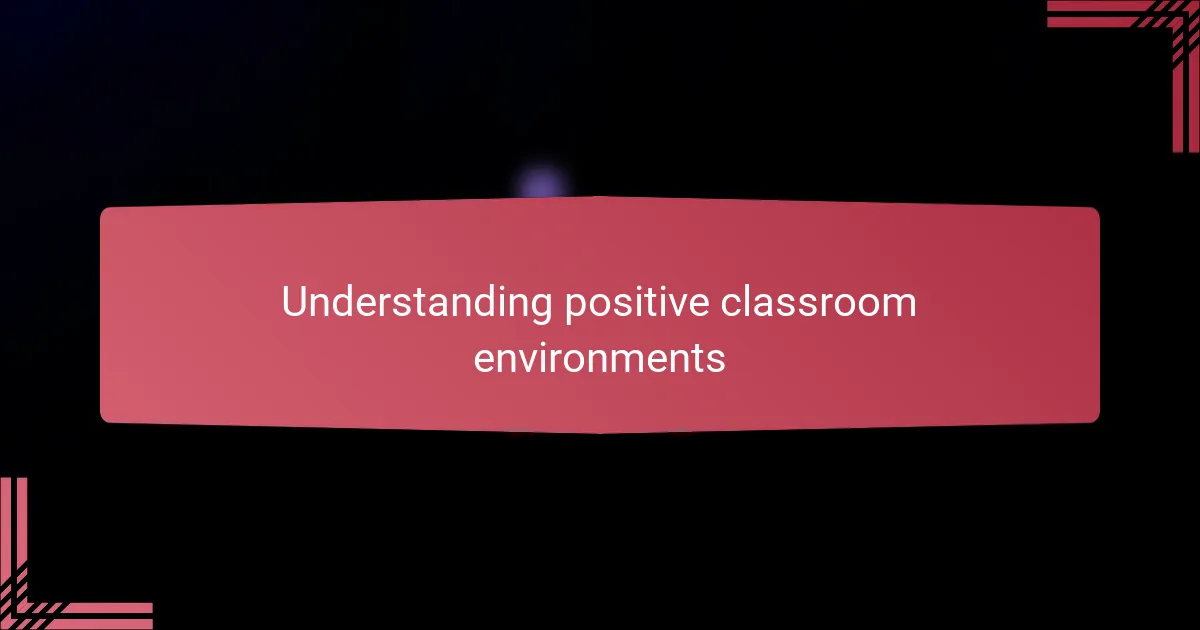
Understanding positive classroom environments
A positive classroom environment is more than just a space with colorful posters and comfy chairs; it’s a place where every student feels valued and safe. From my experience, when students know they are respected and heard, their confidence blossoms naturally. How often have we seen a child light up simply because their opinion mattered in class?
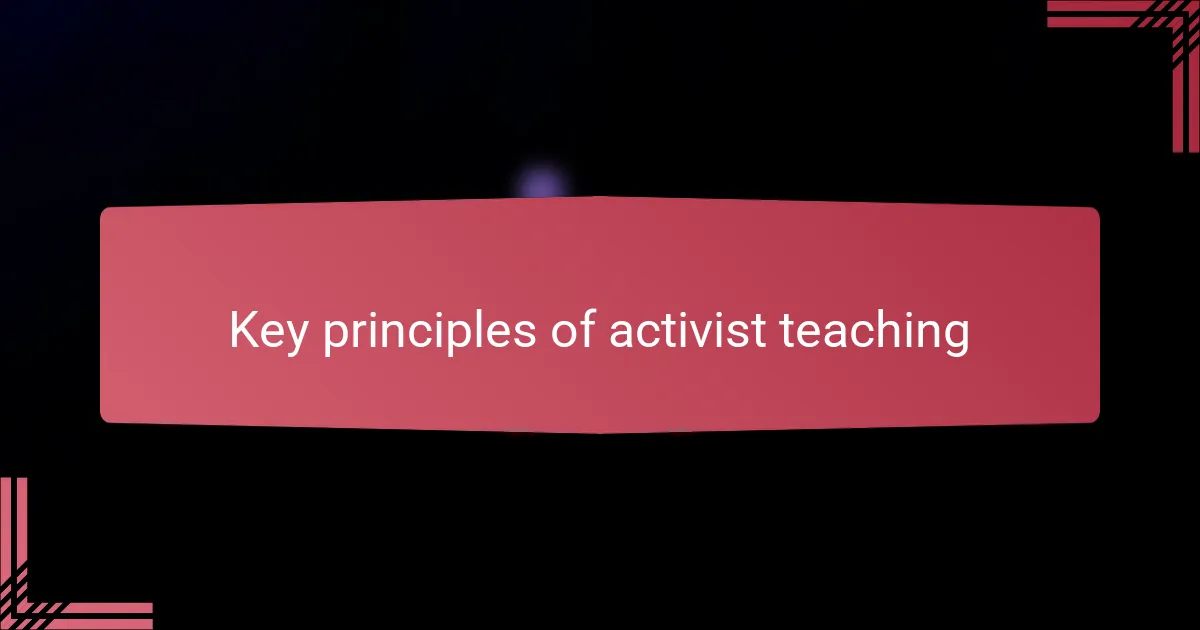
Key principles of activist teaching
Activist teaching starts with the belief that education is a powerful tool for change. I’ve found that emphasizing equity means recognizing each student’s unique background and challenges, rather than expecting everyone to fit the same mold. Have you noticed how classrooms transform when fairness replaces one-size-fits-all rules?
Building relationships is another core principle I keep returning to. When I genuinely listen to my students’ experiences and encourage them to share their voices, the classroom becomes a community rather than just a lecture hall. It’s incredible how trust opens the door to meaningful learning and activism.
Lastly, reflection is key. I make it a point to regularly assess not only what I teach but how I teach, asking myself if I’m empowering students to question the status quo or simply maintaining it. Isn’t the goal of activist teaching to ignite thoughtful action, not just passive acceptance?
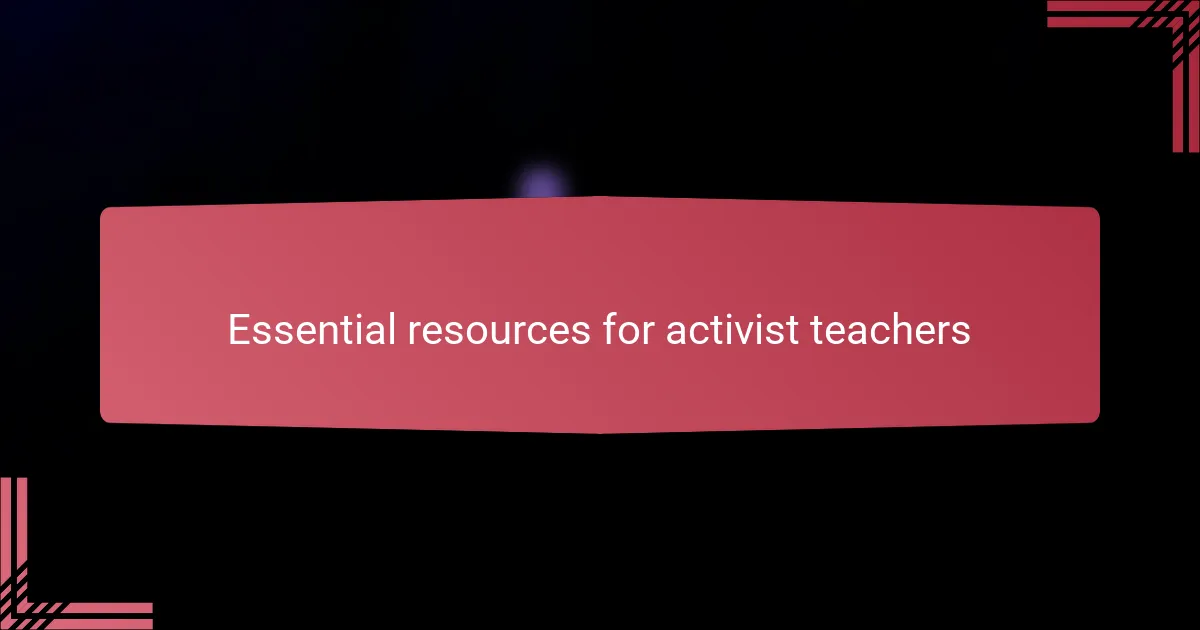
Essential resources for activist teachers
When I first stepped into activist teaching, I quickly realized that having the right resources made all the difference. Books and articles on social justice education helped me frame discussions thoughtfully, while access to diverse multimedia materials brought real-world stories into my classroom. Have you ever tried using a documentary or podcast that sparked genuine curiosity and deep conversations among your students?
I can’t overstate how valuable professional learning communities have been for me. Connecting with fellow activist teachers through forums and workshops provided fresh ideas and moral support during challenging times. Isn’t it empowering to know you’re not alone in pushing for equity and change?
Of course, practical tools like lesson plans that center student voice and culturally responsive resources are essential. I learned early on that when students see themselves reflected in the material, their engagement skyrockets. How often do we pause to consider whether our resources truly represent the diverse experiences of our classroom?
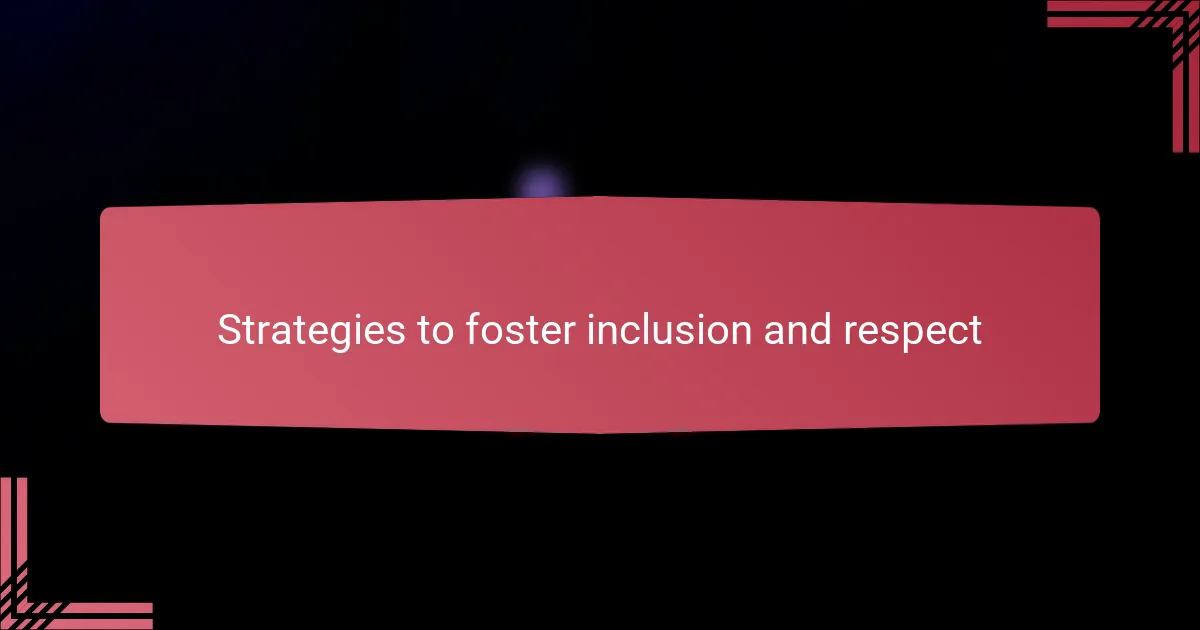
Strategies to foster inclusion and respect
One strategy I rely on to foster inclusion is setting clear expectations around respect from day one. I remember explaining to my students that every voice matters and that disagreements were opportunities to learn, not battles to win. Doesn’t it change the classroom dynamic when respect becomes a shared responsibility rather than a rule imposed from above?
Creating opportunities for students to share their stories has also been a game-changer in my experience. When I invited a quiet student to talk about a family tradition during a lesson, the whole class leaned in, eager to understand a perspective different from their own. Have you noticed how personal stories can break down walls and build empathy like nothing else?
In addition, I make a habit of celebrating diversity through classroom rituals—whether it’s acknowledging various cultural holidays or incorporating multilingual greetings. These small actions send a powerful message: everyone’s identity is welcome and valued here. Isn’t it amazing how these intentional gestures can transform a space into a true community?
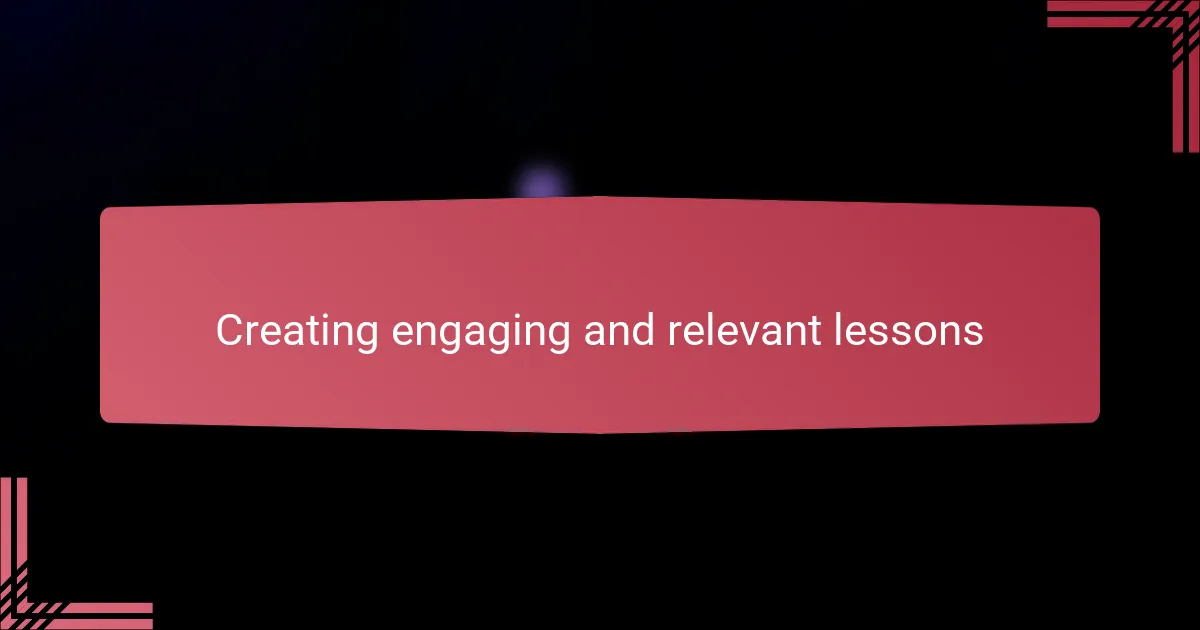
Creating engaging and relevant lessons
One approach I found especially effective is designing lessons around students’ own experiences and interests. When I introduced a project that asked students to explore local community issues, their enthusiasm soared because the topics felt real and urgent. Have you seen how relevance alone can turn reluctant learners into passionate investigators?
I also mix in current events and social justice themes to keep lessons fresh and meaningful. For example, linking a history unit to ongoing civic movements sparked deep discussions that went beyond the textbook. Isn’t it powerful when students connect academic content to the world they’re living in?
Sometimes, I let students take the lead by suggesting what they want to learn or how they want to learn it. This choice empowers them to invest more in their education and builds a classroom culture rooted in respect and collaboration. Have you tried handing over some control and noticed the transformation in engagement?

Building student relationships and trust
Building student relationships and trust starts with showing genuine interest in each person’s story. I often make time to chat one-on-one with students, learning about their passions and challenges beyond the classroom. Isn’t it surprising how much a simple conversation can break down barriers and open doors to deeper connection?
Trust, to me, grows from consistency and honesty. When I admit my own mistakes or uncertainties, students see me as human—not just an authority figure. Have you ever noticed how this kind of vulnerability invites students to take risks and share their own thoughts more freely?
I also believe that creating space for shared experiences strengthens bonds. For instance, group projects where students must collaborate teach patience and respect firsthand. When students witness their peers’ strengths and struggles up close, trust becomes the foundation for meaningful learning. Doesn’t that feel like the heart of a positive classroom environment?